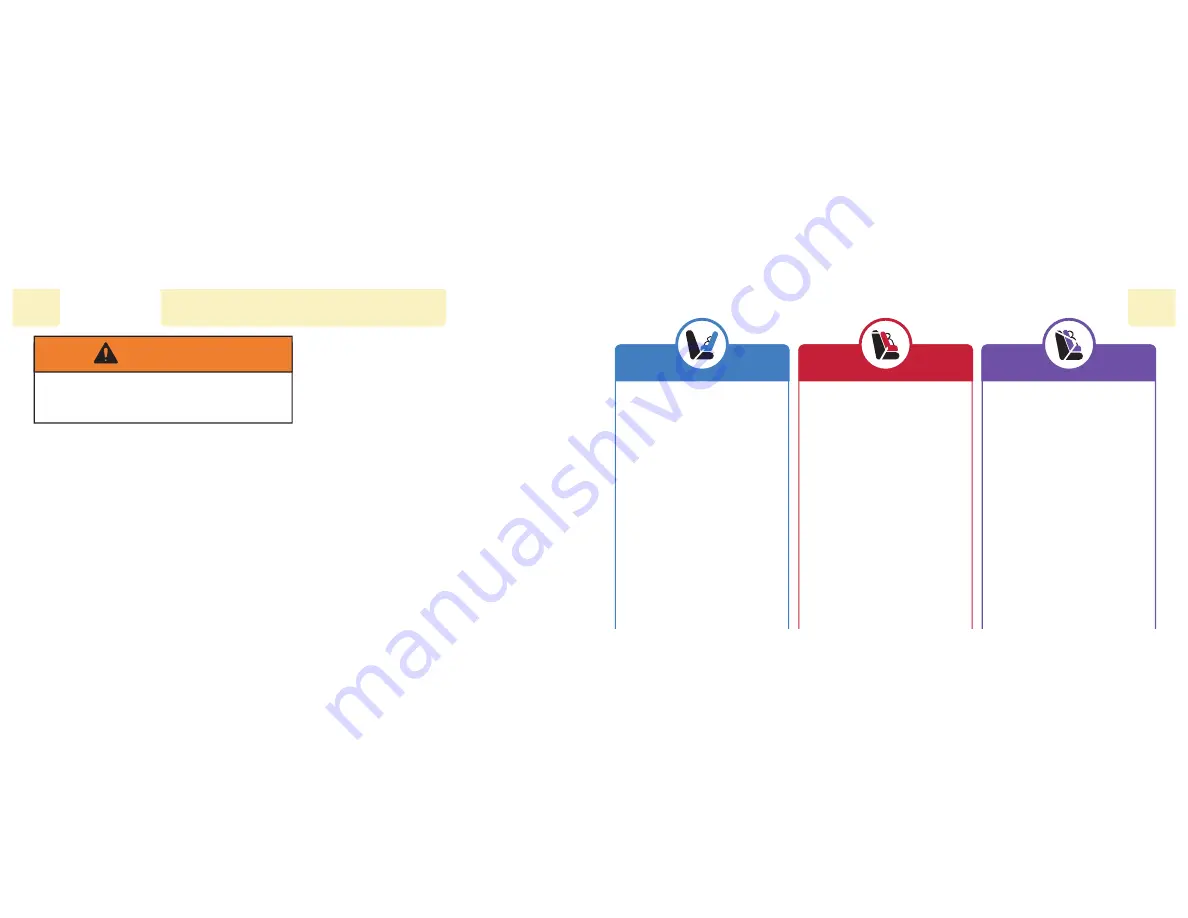
Your child’s height, weight, and age determine how the car
seat should be placed in the vehicle.
Children vary widely in body size, shape, and temperament—
please consult your doctor before switching between
any modes within the limits and fi t requirements of the
car seat.
State Laws
Please be certain to follow your state’s laws regarding car
seat use.
American Academy of Pediatrics
Recommendations
Infants and Toddlers
Should ride in a rear-facing car seat as long as possible, until
they reach the highest weight or height allowed by their car seat.
Toddlers and Preschoolers
Once they are facing forward, children should use a forward-
facing car seat with a harness for as long as possible, until they
reach the height and weight limits for their car seats.
School-Aged Children
Once they have outgrown their forward facing car seat, children
should use a belt-positioning booster seat until the vehicle’s
lap and shoulder seat belt fi ts properly. This is often when they
have reached at least 4 feet 9 inches in height and are 8 to 12
years old.
Older Children
All children younger than 13 years should be restrained in the
rear seats of vehicles for optimal protection.
Measure your child’s weight and height
(
DO NOT
guess) before choosing this car
seat’s mode.
Booster Seat Mode
40-100 lb
(18.1-45.4 kg)
and
43-52 in.
(110.1-132.1 cm)
Booster Seat Section
PAGE 32
Storing Harness System
PAGE 34
Booster Seat Use in Vehicle
PAGE 37
Booster Seat Child Fit
PAGE 40
Rear-Facing Mode
5-50 lb
(2.3-22.6 kg)
and
19-40 in.
(48-101.6 cm)
Rear-Facing Section
PAGE 7
Rear-Facing Child Fit
PAGE 9
Rear-Facing Vehicle Install
PAGE 11
Forward-Facing Mode
22-65 lb
(10.1-29 kg)
and
29-49 in.
(73.6-125 cm)
and
at least 1 year old
Forward-Facing Section
PAGE 18
Forward-Facing Child Fit
PAGE 20
Forward-Facing Vehicle Install
PAGE 22
Choosing Car Seat Mode
5
6
WARNING:







































